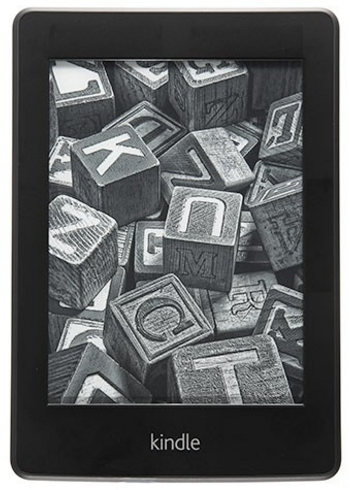Working on the written review for the Kindle Paperwhite, I was comparing it to the Kindle Touch from last year and thinking about how much more expensive the Paperwhite model is.
The base Kindle Touch sold for only $99 and the 3G model started at $149, whereas the Paperwhite starts at $119 for the Wi-Fi model and $179 for the 3G version.
So $20 extra for the Wi-Fi model and $30 extra for 3G. Big deal, right?
Not when you consider the additional hardware the Kindle Touch offered. It had two speakers, a headphone jack, and double the overall internal storage space (4GB vs the Paperwhite’s 2GB). That certainly had to cost at least $10 more, right?
Then consider the extra features the Kindle Touch had. The speakers and headphone jack gave it the ability to play MP3 audio files as well as audiobooks, and it could read ebooks aloud with text-to-speech, which has been a distinctive Kindle feature since the beginning.
And then there’s the touchscreen. The Kindle Touch uses an infrared touchscreen designed by a company called Neonode, and there were surely licensing fees involved for using it. The Paperwhite on the other hand uses a capacitive touchscreen. Amazon purchased a touchscreen company a couple of year back so that is likely in-house. Regardless, there’s no reason they would be using the capacitive screens unless they were cheaper to produce in the long run.
Adding everything up, Amazon sure is charging a premium for the Paperwhite screens.
By contrast, B&N and Kobo both priced their front-lit ereaders the exact same as the year before. Granted both companies have since lowered the price on the older models to $99, and B&N recently slashed an additional $20 off the GlowLight Nook Touch to make it the same price as the Kindle Paperwhite, but neither of those lost features in the process either.


I believe the term Amazon uses for their diffuser film is “nano-etched”. The company they bought to get the tech had been working on it for years before and even more years after they bought it up. So making the things is probably non-trivial and, in keeping with most bleeding-edge tech, very very touchy.
I suspect the yield on the film is currently very low compared to other tech in the KPW.
BTW, remember how B&N charged a $40 premium for the Nook Glo at intro? And they had supply issues for a while so odds are even their diffuser film had yield issues.
The good news is that with high tech products yield issues tend to be settled over time so the Paperwhite premium should go down over time. We might see it on the entry-level Kindle reader by next fall. 🙂
(Also, I can think of a couple reasons why Amazon might be using the inhouse capacitance touch film even if it cost more than a NeoNode array. One is that the Neonode tech is subject to false positives. Other possibilities range from increased accuracy to marketting value to just “eating your own dog food” as they say in the tech word.)
Amazon sure knows how to subsidize whatever losses they incur from pricing readers below cost, if that is even the case. For instance, the Kindle cover is $40, and looks like it costs all of $6 to produce.
Amazon swears that each part of its ebook operation is a distinct, profitable unit. Looking at their reader prices versus the competition I suspect they don’t actually incur any losses on hardware sales. They may only make a pro-forma dollar or two profit, but in their business model that is just fine. 🙂